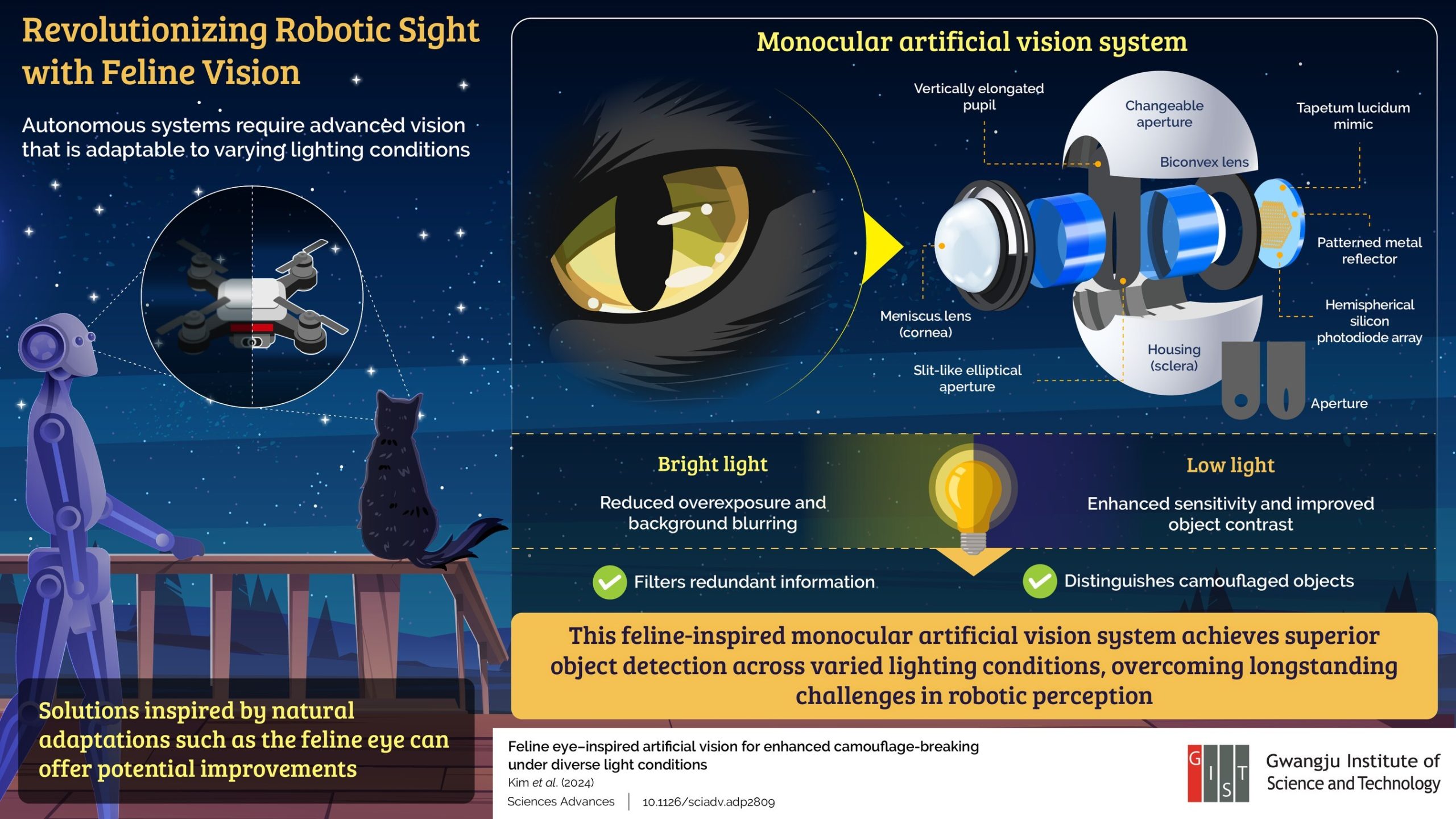Researchers at the Gwangju Institute of Science and Technology (GIST) unveiled a vision system inspired by feline eyes to enhance object detection in various lighting conditions. Using a unique shape and reflective surface, the system reduces glare and boosts sensitivity. Through filtering unnecessary details, the technology improves the performance of single-lens cameras for a notable advancement in robotic vision. The research was published in the journal Science Advances.

Using a slit-like elliptical aperture and patterned metal reflector to improve object detection and recognition in various lighting conditions, the result is a reduction in light interference. It enhances photosensitivity, enabling the detection of camouflaged objects.
Autonomous systems struggle to “see” well in different environments—like bright sunlight, low light, or when objects blend into complex backgrounds. Cat eyes are unique. During the day, vertical slit-shaped pupils help them focus and reduce glare, and at night, their pupils widen to let in more light. A reflective layer called the tapetum lucidum boosts their night vision.
This technology has exciting possibilities for real-world applications, including drones, security robots, and self-driving vehicles, enabling them to adeptly navigate intricate environments and execute tasks with unparalleled accuracy.

